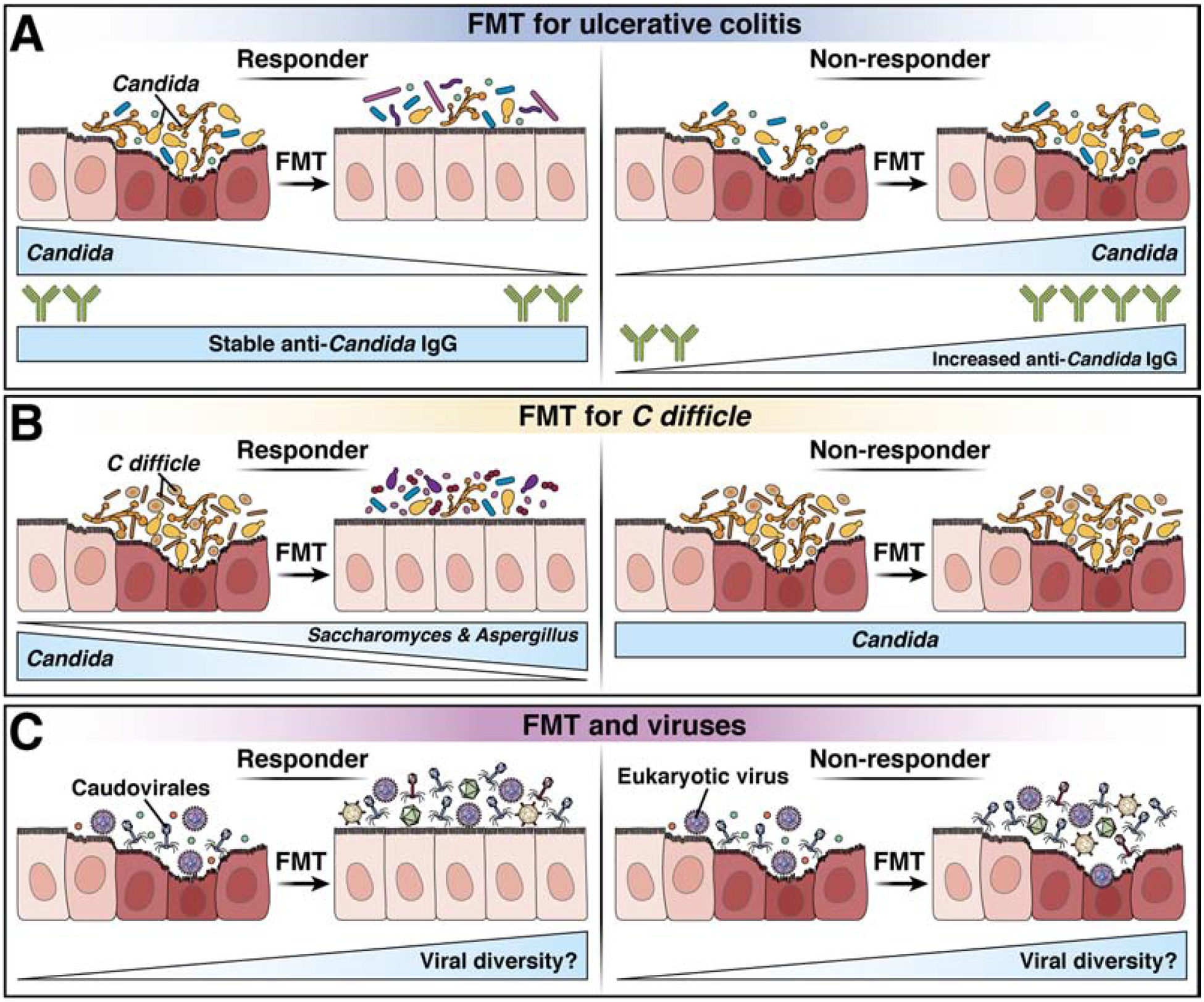Figure 5. Gut fungi and viruses in FMT.

A) In patients with UC, increased C albicans abundance before FMT is associated with a clinical response (top), whereas stable titers of IgG against C albicans in blood samples, and decreased Candida abundance in fecal samples, associate with reduced disease severity. B) In patients with CDI, a high relative abundance of Saccharomyces and Aspergillus in fecal samples after FMT is associated with response to the treatment (top), whereas overrepresentation of C albicans and decreased fungal diversity after FMT associate with non-responsiveness (bottom). C) In patients with CDI, FMT modulates gut phage composition; response to FMT is associated with an increased abundance of Caudovirales taxa. Little is known about the effects of viruses that infect eukaryotic cells. It will be important to determine which viruses are included in donor sample and how FMT affects the viruses already present in the recipient.
